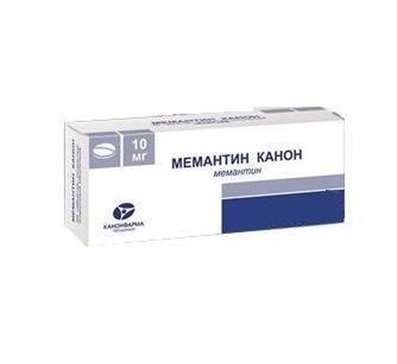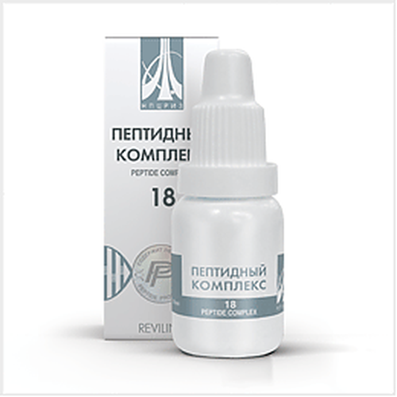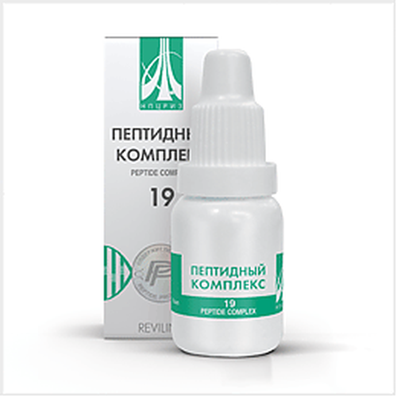Instruction for use: Pantoprazole Canon
I want this, give me price
Active substance Pantoprazole
ATX code A02BC02 Pantoprazole
Pharmacological group
Proton pump inhibitors
Nosological classification (ICD-10)
K21 Gastroesophageal reflux
Biliary reflux esophagitis, gastrocardiac syndrome, Gastroesophageal reflux disease, Gastro-oesophageal reflux disease, Non-erosive reflux disease, syndrome gastrocardiac, Remhelda syndrome, Erosive reflux esophagitis, Ulcerative reflux esophagitis
K21.0 Gastro-oesophageal reflux with oesophagitis
Reflux gastritis, Reflux esophagitis, Erosive and ulcerative esophagitis
K25 Gastric ulcer
Helicobacter pylori, Pain syndrome in gastric ulcer, Pain syndrome in gastric ulcer and duodenal ulcer, Inflammation of the gastric mucosa, Inflammation of the gastrointestinal mucosa, Benign gastric ulcer, The disease of the stomach and duodenum, asotsiirovannoe with Helicobacter pylori, Aggravation gastroduodenita on the background of peptic ulcer, Exacerbation of peptic ulcer, The aggravation of gastric ulcer, The organic gastrointestinal disease, Peptic ulcer of the stomach and duodenum, Postoperative gastric ulcer, Recurrent ulcers, Symptomatic gastric ulcers, Chronic inflammatory disease of the upper gastrointestinal tract, associated with Helicobacter pylori, Helicobacter pylori eradication, Erosive and ulcerative lesions of the stomach, Erosive lesions of the stomach, The erosion of the gastric mucosa, Peptic ulcer disease, Stomach ulcer, Gastric lesion, Ulcerative lesions of the stomach, Symptomatic ulcers of the stomach and duodenum
K26 Duodenal Ulcer
Pain with duodenal ulcer, Pain syndrome in gastric ulcer and duodenal ulcer, The disease of the stomach and duodenum, asotsiirovannoe with Helicobacter pylori, Exacerbation of peptic ulcer, The worsening of duodenal ulcer, Peptic ulcer of the stomach and duodenum, Relapse of duodenal ulcers, Symptomatic ulcers of the stomach and duodenum, Helicobacter pylori eradication, Erosive and ulcerative lesions of the duodenum, Erosive-ulcerative lesions of duodenal ulcers associated with Helicobacter pylori, Erosive lesions of the duodenum, Duodenal ulcer, Ulcerative lesions of the duodenum]
K27 Peptic ulcer, unspecified
Perforation of peptic ulcer, Drug-induced gastrointestinal ulcers, medication ulcers, Peptic ulcer of the digestive tract, Peptic ulcer with Helicobacter pylori, peptic ulcer, Damage of gastrointestinal mucosa caused by NSAID, Symptomatic ulcers digestive tract, stress ulcer, Stress gastric ulcer, Stress damage to the mucous membrane, stress ulcer, duodenal ulcer Stress, Stress ulcer, Stressful GI ulcers, Erosive-ulcerative lesions of the gastrointestinal tract, The erosion of the gastrointestinal tract, Erosion of the mucosa of the upper gastrointestinal tract, The erosion of the gastrointestinal mucosa, gastrointestinal ulcer, ulcer drug, peptic ulcer, postoperative ulcer, stress ulcer, Ulcerative lesions of the gastrointestinal tract, Acute stress ulcer gastrointestinal tract, Symptomatic gastrointestinal ulcers, Complications of peptic ulcers
K29.7 Unspecified gastritis
Gastritis with low acidityá Gastritisá Gastritis with a normal secretory functionáGastritisá Erosive gastritis
K86.8.3 * Zollinger-Ellison Syndrome
Adenoma of the pancreas ulzerogennosti, gastrinoma, Zollinger-Ellison Syndrome, gastrinoma
R11 Nausea and vomiting
Postoperative vomiting, Nausea, vomiting, Vomiting in the postoperative period, Vomiting drug, Vomiting on the background radiation therapy, Vomiting indomitable, Vomiting with radiation therapy, persistent vomiting, anacatharsis, Postoperative nausea, Vomiting during chemotherapy, Vomiting of central origin, Vomiting on the background of cytostatic chemotherapy, persistent hiccups, repeated vomiting
R12 Heartburn
R14 Flatulence and related conditions
abdominal distention, flatulence, pronounced flatulence, Gases in the postoperative period, degassing bowel before diagnostic studies, degassing intestine before X-rays, gas delay, Excessive formation and accumulation of gases in the digestive tract, brash, Flatulence, Flatulence with increased gas formation in the digestive tract, Flatulence in infants, Flatulence in newborns, Flatulence caused by fatty or unusual food, Flatulence caused by disease of the digestive tract, belching, The feeling of bloating, The feeling of fullness, Increased flatulence, The increased gas formation and accumulation of gases in the digestive tract, Fullness in the epigastrium, Feeling of fullness, The feeling of heaviness in the stomach, Flatulence in the gastrointestinal tract, Increased production and accumulation of gases in the digestive tract
Composition
Tablets, film-coated enteric-coated 1 tab.
active substance:
pantoprazole sodium sesquihydrate 22.57 mg
(in terms of pantoprazole - 20 mg)
excipients: magnesium hydroxycarbonate heavy - 7.53 mg; macrogol (polyethylene glycol) - 1.2 mg; mannitol - 63 mg; calcium stearate - 1.2 mg; colloidal silicon dioxide - 1 mg; Crospovidone - 20 mg; Povidone K30 - 3.5 mg
film cover: Opadry transparent (hypromellose (hydroxypropylmethylcellulose) - 1.920 mg, macrogol (polyethylene glycol) - 0.48 mg) - 2.4 mg; Acryl-Green (methacrylic acid and ethyl acrylate copolymer (1: 1) - 5.676 mg, colloidal silicon dioxide - 0.086 mg, sodium hydrocarbonate - 0.086 mg, sodium lauryl sulfate - 0.043 mg, ferric oxide yellow - 0.06 mg, dye indigo carmine - 0.069 mg, brilliant blue dye - 0.026 mg, talc - 1.419 mg, titanium dioxide - 1.135 mg) - 8.6 mg; triethyl citrate - 1 mg
Tablets, film-coated enteric-coated 1 tab.
active substance:
pantoprazole sodium sesquihydrate 45.14 mg
(in terms of pantoprazole - 40 mg)
excipients: magnesium hydroxycarbonate heavy - 15.06 mg; macrogol (polyethylene glycol) - 2.4 mg; mannitol - 126 mg; calcium stearate - 2.4 mg; colloidal silicon dioxide - 2 mg; Crospovidone - 40 mg; Povidone K30 - 7 mg
film cover: Opadry transparent (hypromellose (hydroxypropyl methyl cellulose) - 3.84 mg, macrogol (polyethylene glycol) - 0.96 mg) - 4.8 mg; Acryl-Green (methacrylic acid and ethyl acrylate copolymer (1: 1) - 11.352 mg, colloidal silicon dioxide - 0.172 mg, sodium hydrocarbonate - 0.172 mg, sodium lauryl sulfate - 0.086 mg, ferric oxide yellow - 0.12 mg, dye indigo carmine - 0.138 mg, brilliant blue dye — 0.052 mg, talc — 2.838 mg, titanium dioxide — 2.27 mg) —17.2 mg; triethyl citrate - 2 mg
pharmachologic effect
Pharmacological action - inhibiting proton pump.
Dosage and administration
Inside The tablet should be swallowed whole, not chewed or cracked, washed down with a small amount of liquid, before eating, usually before breakfast. When taking a second dose of the drug is recommended to take before dinner.
Peptic ulcer of the stomach and duodenum, erosive gastritis (including those associated with taking NSAIDs)
The recommended dose of 40-80 mg per day. The course of treatment is 2 weeks for exacerbation of duodenal ulcer and 4–8 weeks for exacerbation of gastric ulcer.
Anti-relapse treatment of gastric ulcer and duodenal ulcer - 20 mg / day.
Eradication of Helicobacter pylori
The following combinations are used as a triple therapy:
1. Pantoprazole Canon 20–40 mg 2 times a day + amoxicillin 1000 mg 2 times a day + clarithromycin 500 mg 2 times a day. The course of treatment is 7-14 days.
2. Pantoprazole Canon 20–40 mg 2 times a day + metronidazole 500 mg 2 times a day + clarithromycin 500 mg 2 times a day. The course of treatment is 7-14 days.
3. Pantoprazole Canon 20–40 mg 2 times a day + amoxicillin 1000 mg 2 times a day + metronidazole 500 mg 2 times a day. The course of treatment is 7-14 days.
After the end of combination therapy, the use of Pantoprazole Canon can be continued in order to heal the ulcer. In case of duodenal ulcer, taking pantoprazole canon can be prolonged from 1 to 3 weeks.
Patients with severe renal dysfunction (creatinine Cl <20 ml / min) or on hemodialysis do not receive Helicobacter pylori eradication therapy.
Treatment of mild GERD symptoms (such as heartburn, nausea, sour belching)
The recommended dose of the drug is 20 mg / day. To achieve positive dynamics in the elimination of symptoms, it may be necessary to take the drug for 2-3 days, but to completely eliminate the symptoms, it may be necessary to take the drug for 7 days. If the condition worsens during the first 3 days of treatment, consultation with a specialist is recommended. The drug should be stopped immediately after the symptoms disappear.
Zollinger-Ellison Syndrome
The recommended dose of 40-80 mg per day. In patients with severely impaired liver function, the dose should be reduced to 40 mg 1 time in 2 days. In this case, it is necessary to monitor blood biochemical parameters. With an increase in liver enzyme activity, discontinue use of the drug.
Elderly patients
Dose adjustment is not required. However, elderly patients should not exceed a daily dose of 40 mg. An exception is the use of combination antimicrobial therapy against Helicobacter pylori, when elderly patients should also use Pantoprazole Canon 40 mg 2 times a day.
Patients with renal failure
Patients with severe renal impairment (creatinine Cl <20 ml / min) or on hemodialysis should not exceed a daily dose of 40 mg. For this reason, eradication therapy for Helicobacter pylori is not indicated for such patients.
Pantoprazole Canon should not be taken for prophylaxis.
Release form
Tablets, film-coated enteric-coated, 20 mg and 40 mg. In a blister strip packaging of PVC film or PVC film / polyvinylidene chloride or PVC film / polychlorotrifluoroethylene and aluminum printed lacquer of 7, 10, 14 or 28 pcs. 1, 2, 4 blister packs of 7, 10 or 14 pcs. or 1.2 blister packs of 28 pcs. each. in a pack of cardboard.
Pharmacy sales terms
On prescription.
Storage conditions
At temperatures not higher than 25 ° C, in the original packaging.
Keep out of the reach of children.
Shelf Life
2 years.
Do not use after the expiration date printed on the package.

 Cart
Cart





